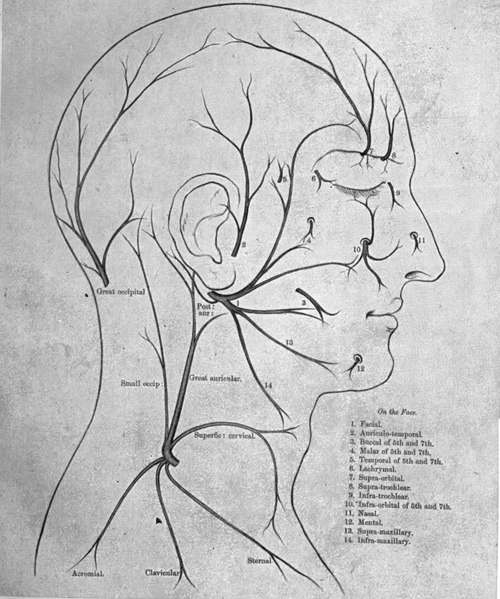Eighth Or Auditory Nerve
Description
This section is from the book "Nerves Of The Human Body", by Charles R. Whittaker. Also available from Amazon: Hughes Nerves Of The Human Body.
Eighth Or Auditory Nerve
The auditory nerve consists of two elements, cochlear and vestibular, the fibres of which arise in the internal ear from the spiral and vestibular ganglia respectively.
Central Connections
(a) Cochlear division can be traced to the dorsal and ventral cochlear nuclei on the corresponding sides of the resti-form body.
(b) Vestibular division passes to
(1) The dorsal vestibular nucleus in the floor of the fourth ventricle.
(2) The lateral vestibular nuclens (Deiters').
(3) The superior vestibular nucleus (Bechterew's), and
(4) The cerebellar cortex.
Superficial Origin
The vestibular division enters the pons on the medial aspect of the restiform body, while the cochlear division enters on the lateral part of that body.
Course
The nerve accompanies the facial and pars intermedia into the internal auditory meatus, lying below the two former nerves. In the meatus it divides into two, superior or vestibular, and inferior or cochlear.
After further subdivision the branches pierce the lamina cribrosa at the bottom of the meatus, The vestibular division receives twigs from the pars intermedia, and gives off a communicating branch to the geniculate ganglion of the facial.
Plate III. Superficial Nerves Of Face And Front Of The Neck, With Their Communications

Branches
Auditory. | Cochlear | to saccule. to posterior semicircular canal. to organ of Corti. |
to utricle. to superior semicircular canal. to lateral semicircular canal. | ||
Vestibular |
Continue to:
